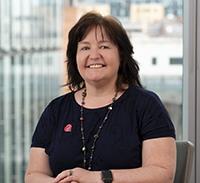Who was the first woman judge in England and Wales? If you replied ‘Elizabeth Lane’, award yourself an A grade: Lane (1905-1998) became the first female county court judge in 1962, moving to the High Court three years later.
However, you get a A* grade if you said ‘Rose Heilbron’. Although Lane was the first woman appointed to a full-time judicial post, Heilbron (1914-2005) became recorder of Burnley in 1956, a milestone greeted with worldwide publicity. Why, then, did Heilbron have to wait until 1974, when she was almost 60 and had been a silk for 25 years, before becoming a High Court judge? Why, indeed, was she shunted off to the Family Division when she was the first woman to sit at the Old Bailey and had been trying criminal cases for 18 years?
These are questions that a new biography of Heilbron raises but cannot answer, even though it was written by her only child, Hilary Heilbron QC. The author says her mother’s ‘assignment to the Family Division was in many ways a waste of her experience, but to appoint a woman to the Queen’s Bench Division to try crime and civil cases was, in 1974, still a step too far’. Why? One answer is offered by Cherie Blair QC, as she is styled in the foreword to Rose Heilbron (Hart Publishing, £20).
When Heilbron was finally appointed to the High Court by a Labour lord chancellor, writes Blair, ‘the overwhelming consensus was that, had she been a man, she would have been appointed 10 years earlier’. True, but Lane was not a man and she had been appointed to the High Court nearly 10 years earlier by a Labour lord chancellor.
Heilbron studied law at the University of Liverpool at a time when it was still rare for women to do so. She was the first woman to receive a scholarship from one of the inns of court and, for several years, the only practising female silk: Heilbron was made a KC in 1949, when she was only 34, at the same time as Helena Normanton, who was 56 and retired soon after. Heilbron was also the first woman to be elected a bencher of Gray’s Inn, in 1968, and the first woman to become leader of her circuit, in 1973. But both these honours were long overdue.
What held her back? There was said to have been some resentment that she built her practice during the second world war, when many of her male competitors were in uniform. But, unlike most other female barristers of her generation, she maintained and enhanced her practice when the men returned from the front, despite having a baby early in 1949. Was it antisemitism? That may well have been a factor, although other Jewish judges were prominent at the time: Lord Cohen, for example, had become a law lord in 1951. Was it because her name and photograph were often in the papers? That, too, might have been a factor – although Heilbron kept well within the bar’s rigid code of conduct.
I suspect it was the natural caution of the legal establishment, even as late as the 1960s. Faced with the prospect of appointing a high-profile woman to try crime, the lord chancellor’s officials may have thought it safer to ease the way by putting a low-profile woman into the county court. So long as the heavens had not fallen in, Lane could then be promoted – itself an unusual move – to the low-profile end of the High Court. Further progress would be gradual.
How much has changed in half a century? It is widely believed that Lord Judge will retire as lord chief justice next summer. There are two candidates for his post: Sir John Thomas, 65, president of the Queen’s Bench Division, and Lady Justice Hallett, 62, vice-president of the Queen’s Bench Division. Shortly before Jack Straw ceased to be lord chancellor in 2010, he tried to have Hallett appointed as president of the Family Division. The job went, instead, to Sir Nicholas Wall. Straw now feels vindicated by events, given that Wall is retiring at the end of this month on grounds of ill health. It is thought that Hallett is no longer interested in the family job, which may well go to Lord Justice Munby.
Will we see a woman leading the judiciary of England and Wales next autumn? Hallett is at a disadvantage because, unlike Thomas, she has not presided over many high-profile appeals or delivered many precedent-setting judgments. But that is because the most demanding cases have, inevitably, gone to more senior judges. She needs to be given some heavy appeals in the coming months. Then we shall see just how good a woman judge can be.



























No comments yet